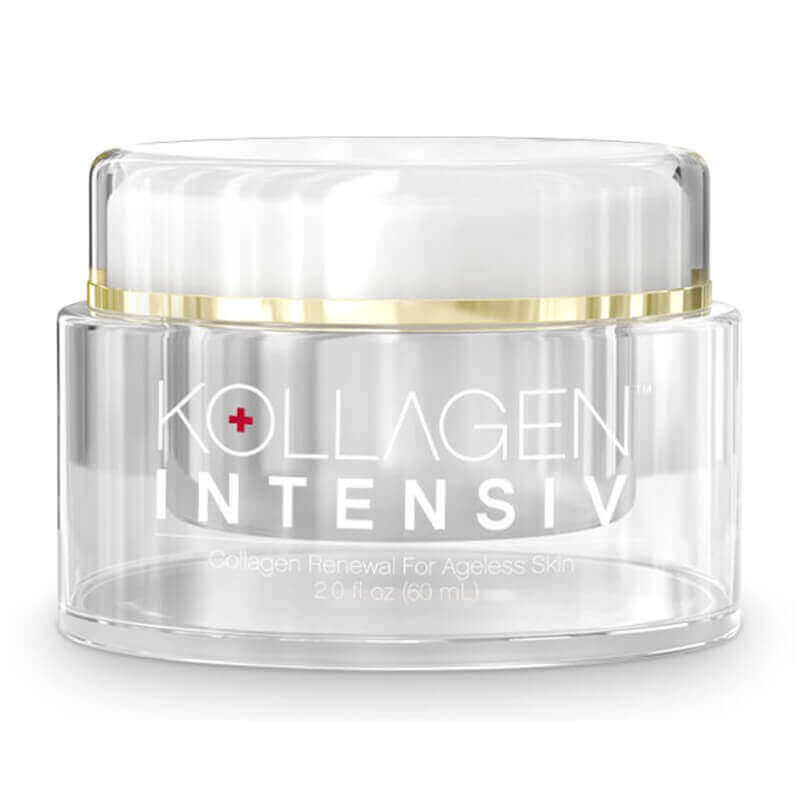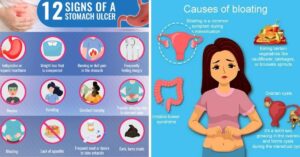What Is Blemished Skin Really About?
Before diving into the best face products for blemished skin, it’s important to understand what blemished skin truly is and why it requires specialized care.
Blemished skin isn’t just about the occasional pimple. It includes persistent breakouts, blackheads, whiteheads, clogged pores, acne scars, and even skin redness or irritation. It’s a clear signal that your skin is reacting whether to internal triggers like hormones and diet, or external ones like pollution, stress, or pore-clogging skincare products.
When your pores get blocked with excess oil, dead skin, and bacteria, the skin becomes inflamed. This leads to spots, bumps, and uneven texture. Using harsh products can strip your skin, damaging its barrier and making blemishes worse.
That’s why selecting the best face products for blemished skin is more than just a cosmetic choice it’s a strategic move toward healing. The right ingredients work with your skin’s biology, helping to unclog pores, calm inflammation, and restore balance without over-drying or irritating it further.
In this post, we’ll explore science-backed, dermatologist-approved products that can help you achieve clear, healthier-looking skin no guesswork required.
The Science Behind Facial Blemishes
To truly find the best face products for blemished skin, you first need to understand the biological mechanics behind facial blemishes. These are not just random breakouts they’re your skin’s response to underlying triggers happening beneath the surface.
1. How Blemishes Form
Facial blemishes develop when:
- Sebaceous glands overproduce oil (sebum)
- Dead skin cells aren’t properly shed
- Pores become clogged
- Bacteria (especially Cutibacterium acnes) grows in these blocked pores
- Inflammation causes visible red, swollen pimples or cysts
It’s a chain reaction. One imbalance triggers the next. That’s why skincare isn’t just about “drying out a zit”it’s about restoring your skin’s natural function.
2. The Role of Hormones and Genetics
Hormonal fluctuations especially during puberty, menstruation, pregnancy, or stress cause spikes in androgens, which increase oil production. Genetics can also influence how much sebum your skin produces, how easily your pores clog, and how your immune system reacts to bacteria.
Some skin types are simply more acne-prone, which is why even the best face products for blemished skin need to be matched carefully to your unique needs.
3. Why Inflammation Matters
Many blemishes are inflammatory, meaning they involve the immune system. When the skin detects bacteria or blockages, it launches an inflammatory response, resulting in swelling, redness, and sometimes pain. This is why anti-inflammatory ingredients like niacinamide, zinc, and green tea extract are common in effective blemish-fighting products.
4. The Skin Barrier Connection
Your skin’s barrier a layer of lipids and cells is your first defense. When it’s compromised by over-cleansing, harsh exfoliants, or the wrong products, blemishes become more likely. Hydrating, barrier-repairing ingredients (like ceramides and hyaluronic acid) are essential in the best face products for blemished skin, because they heal and protect your skin while addressing breakouts.
5. Why “One Size Fits All” Doesn’t Work
What causes blemishes for one person might not for another. That’s why understanding the science behind your specific skin concerns helps you pick the right formulation whether it’s salicylic acid for clogged pores, benzoyl peroxide for acne bacteria, or sulfur for hormonal breakouts.
Top Ingredients That Help Clear Blemishes
If you’ve ever stood in the skincare aisle staring at a wall of products, you know how overwhelming it is. The truth is, not every ingredient will work for blemished skin but the right ones can completely change your skin’s story. The best face products for blemished skin rely on proven ingredients that treat, heal, and prevent breakouts without stripping or irritating your skin.
Here’s what to look for on those labels:
1. Salicylic Acid (BHA)
This beta hydroxy acid is oil-soluble, which means it can dive deep into your pores and unclog them. It gently exfoliates from the inside out and reduces inflammation, making it perfect for blackheads, whiteheads, and surface bumps.
Why it works: It breaks down the bonds between dead skin cells, helps regulate oil, and has anti-inflammatory properties.
Best used in: Cleansers, toners, spot treatments, and exfoliating serums.
2. Niacinamide (Vitamin B3)
This multi-tasking ingredient does it all reduces redness, shrinks pores, controls sebum production, and strengthens your skin barrier. It’s one of the most loved ingredients in the best face products for blemished skin.
Why it works: It calms irritation and inflammation while brightening dark spots caused by old breakouts.
Best used in: Serums, moisturizers, and masks.
3. Benzoyl Peroxide
A classic acne fighter, benzoyl peroxide kills acne-causing bacteria right at the source. It’s powerful, so it works fast but it can be drying, so balance is key.
Why it works: It reduces inflammation and helps prevent new breakouts before they start.
Best used in: Spot treatments and medicated cleansers.
4. Tea Tree Oil
A natural antibacterial, tea tree oil has been proven to be nearly as effective as benzoyl peroxide but with fewer side effects. It’s gentle enough for most skin types if used in the right concentration.
Why it works: It reduces bacteria and soothes the skin without harsh chemicals.
Best used in: Toners, spot treatments, and masks.
5. Azelaic Acid
This underrated powerhouse helps fade post-acne marks, reduce redness, and even prevent new blemishes. It also works well for rosacea-prone or sensitive skin.
Why it works: It’s antibacterial, anti-inflammatory, and reduces melanin production for a more even skin tone.
Best used in: Serums and creams.
6. Zinc
Zinc helps calm inflammation, control oil, and boost the skin’s natural healing process. You’ll often find it in mineral sunscreens and blemish creams.
Why it works: It regulates sebum production and helps reduce bacterial activity on the skin.
Best used in: Spot treatments, moisturizers, and dietary supplements.
7. Clay (Kaolin & Bentonite)
These natural clays are masters at absorbing excess oil and detoxifying the skin. They gently draw out impurities from deep within the pores without being harsh.
Why it works: They mattify the skin and minimize the chance of future breakouts.
Best used in: Face masks and occasional treatments.
8. Hyaluronic Acid
Yes, even blemished skin needs hydration! Dehydrated skin can produce more oil to compensate, leading to even more breakouts. Hyaluronic acid hydrates without clogging pores.
Why it works: It holds up to 1,000 times its weight in water, giving your skin the hydration it needs to stay healthy.
Best used in: Moisturizers and serums.
9. Sulfur
Known for its bacteria-fighting and oil-drying power, sulfur is ideal for treating stubborn blemishes without causing excessive dryness.
Why it works: It dries out pimples and absorbs oil while reducing redness.
Best used in: Spot treatments and masks.

Choosing the Best Face Products for Blemished Skin
Navigating skincare shelves can feel like trying to crack a secret code. With so many products shouting promises, how do you really know what’s right for your skin? Choosing the best face products for blemished skin isn’t about picking the trendiest label it’s about knowing what your skin actually needs and responding with science-backed, skin-safe choices.
Let’s break it down.
1. Know Your Skin Type First
Blemished skin doesn’t always mean oily skin. You can be:
- Dry and blemish-prone
- Combination with hormonal breakouts
- Sensitive with red, reactive blemishes
- Oily with persistent blackheads and whiteheads
Each skin type needs a unique product blend. For example, oily skin benefits from salicylic acid and lightweight gels, while dry, blemish-prone skin may need niacinamide and non-comedogenic moisturizers. Understanding your skin is the first step toward finding the best face products for blemished skin that actually work.
2. Stick to Non-Comedogenic Formulas
Non-comedogenic means a product won’t clog your pores and that’s huge when your skin is breakout-prone. Many products labeled “hydrating” or “rich” may contain ingredients that trigger congestion. Always look for labels that clearly state non-comedogenic, especially for moisturizers, sunscreens, and makeup.
3. Avoid Harsh Stripping Agents
It might feel satisfying to use a strong, tingly toner or a foaming cleanser that leaves your face squeaky clean but your skin isn’t supposed to squeak! Harsh sulfates, high alcohol content, and over-exfoliation can destroy your skin’s protective barrier, triggering more blemishes.
The best face products for blemished skin are gentle yet effective. Think calming botanical extracts, low pH formulas, and ingredients that treat without trauma.
4. Go for Multi-Action Products
Why settle for one benefit when you can have five? Smart skincare combines several skin-healing benefits in one formula hydration, anti-inflammation, oil control, and scar fading.
Look for:
- Cleansers with salicylic acid + calming agents
- Moisturizers with niacinamide + zinc
- Spot treatments with sulfur + tea tree oil
- Serums with azelaic acid + antioxidants
These combinations save time and reduce irritation by avoiding ingredient overload.
5. Choose Based on Active Ingredient Concentrations
A product can contain salicylic acid, but how much it contains really matters. For instance:
- Salicylic acid is typically effective at 0.5%–2%
- Benzoyl peroxide works well at 2.5%–5% (less is more!)
- Niacinamide is great at 4%–10%
- Azelaic acid is most effective around 10%–20%
Overdoing it can backfire. Too much of a good thing can damage your skin barrier and worsen breakouts.
6. Read the Labels The First 5 Ingredients Count
The ingredients listed at the top of the list make up most of the product. If you’re choosing a product marketed as “anti-blemish” but salicylic acid or niacinamide is listed near the bottom, it probably won’t do much.
Instead, choose formulas where active ingredients are within the top five to ten ingredients.
7. Consistency Beats Intensity
One of the most common mistakes people make? Bouncing from product to product too quickly. Your skin needs time at least 4 to 6 weeks to adjust to a new skincare routine. The best face products for blemished skin work best when used consistently, not just when a pimple appears.
8. Don’t Skip Moisturizer and SPF
Yes, even oily, blemish-prone skin needs hydration. Skipping moisturizer can make your skin overproduce oil, leading to even more breakouts. Look for:
- Gel-based moisturizers with hyaluronic acid
- Oil-free SPF 30+ that’s labeled non-comedogenic
Sun damage can darken acne scars and worsen inflammation, so sunscreen isn’t optional it’s essential.
9. Patch Test Every New Product
Always patch test before fully applying a new face product. What works wonders for others might trigger a breakout for you. Apply a small amount to your jawline or behind your ear for a few days to monitor your skin’s reaction.
Daily Skincare Routine for Blemish-Prone Skin
Creating a solid routine is the secret weapon against blemished skin. You don’t need a complicated 12-step process you need consistency, the right ingredients, and products that actually serve your skin.
Here’s how to structure a smart, effective daily skincare routine that helps reduce breakouts, fade marks, and promote clear, calm skin.
Morning Routine
Your skin faces environmental stressors all day pollution, sweat, oil, and bacteria. Your morning skincare should focus on protection and prep.
1. Gentle Cleanser
Start with a mild, sulfate-free cleanser. Look for:
- Salicylic acid or tea tree oil to help unclog pores
- Glycerin or aloe vera to soothe inflammation
Best face products for blemished skin in the morning are ones that cleanse without stripping.
2. Balancing Toner (Optional)
If your skin gets oily fast, a toner with witch hazel or niacinamide can help control shine and refine pores.
Avoid harsh alcohol-based toners they’ll just irritate your skin.
3. Targeted Serum
This is where you bring out the big guns.
- Niacinamide (5–10%) reduces redness and controls oil.
- Azelaic acid or vitamin C fades blemish scars and brightens skin.
These actives help improve skin texture and tone while treating breakouts from within.
4. Oil-Free Moisturizer
Yes, even oily skin needs hydration. Dehydrated skin can actually produce more oil.
Pick a lightweight, non-comedogenic moisturizer with hyaluronic acid, squalane, or zinc.
5. Sunscreen (SPF 30+)
Sunscreen is a non-negotiable. UV exposure can make post-acne marks darker and more stubborn.
Choose a broad-spectrum SPF that’s non-comedogenic and fragrance-free. Look for labels that say “matte finish” or “for acne-prone skin.”
Nighttime Routine
At night, your skin works to heal and renew. This is when blemish-fighting ingredients shine.
1. Double Cleanse (If You Wear Makeup or SPF)
- First cleanse with a gentle oil or micellar water to remove sunscreen, dirt, and oil.
- Second cleanse with a salicylic acid-based cleanser to exfoliate and deep clean.
This step prevents congestion and breakouts.
2. Chemical Exfoliation (2–3 times per week)
Instead of scrubbing your skin raw, go for chemical exfoliants like:
- BHA (salicylic acid): Penetrates pores and breaks down oil
- AHA (glycolic or lactic acid): Gently resurfaces and improves texture
Rotate exfoliants don’t overdo it. Too much can cause peeling or worsen blemishes.
3. Treatment Serums
Apply treatments specifically designed for blemishes:
- Retinoids or retinol: Speeds up cell turnover and prevents new breakouts
- Azelaic acid: Reduces inflammation and treats acne
- Benzoyl peroxide: Kills acne-causing bacteria
These are the real MVPs in the fight against acne and blemishes.
4. Hydrating Moisturizer
Even with active treatments, you still need a moisturizer to lock in hydration and soothe your skin barrier. Look for:
- Ceramides
- Panthenol
- Green tea extract
This helps counteract dryness and irritation from stronger treatments.
5. Spot Treatments (If Needed)
Have a pimple you want to zap? Use a nighttime spot treatment with benzoyl peroxide, sulfur, or salicylic acid.
Dot it on after moisturizer to reduce irritation, and don’t go overboard it’s not a face mask!
Weekly Add-Ons for Extra Support
Adding 1–2 extra treatments per week can help blemished skin reset.
- Clay masks: Great for oily, congested skin (try kaolin or bentonite clay)
- Hydrating masks: If your skin’s dry or over-exfoliated
- LED light therapy: Blue light can kill acne bacteria with no downtime
These extras aren’t mandatory, but they’re helpful for managing stubborn breakouts or flare-ups.
Pro Tips to Make This Routine Work
- Patch test every new product to avoid sudden breakouts
- Introduce actives slowly (especially retinoids)
- Don’t mix too many harsh ingredients no retinol + acids in one go!
- Stick to your routine for at least 4–6 weeks to see results
Consistency is what transforms your skin not constant product hopping.
Top Recommended Face Products for Blemished Skin


What Dermatologists Say About Face Products for Acne
When it comes to managing blemished skin, dermatologists are your most trusted source. Their advice goes beyond trends and marketing claims they rely on science-backed ingredients and clinical outcomes. So, what do the pros actually say about the best face products for blemished skin?
Let’s break it down.

Simplicity Over Hype
Dermatologists agree: more isn’t always better. Many people with acne-prone skin overdo it layering too many actives, using harsh scrubs, or switching products too frequently.
Dr. Sandra Lee (aka Dr. Pimple Popper) often reminds patients, “Your skin barrier is your best defense. Don’t damage it with excessive exfoliation or alcohol-heavy products.”
Instead, dermatologists recommend a consistent, minimal routine with no more than 3–4 active ingredients introduced slowly.
Ingredients Dermatologists Recommend
Here’s what most dermatologists highlight as effective ingredients for treating blemishes and acne:
- Salicylic Acid (BHA): Deep-cleans pores and gently exfoliates dead skin cells
- Benzoyl Peroxide: Kills acne-causing bacteria like P. acnes
- Retinoids (Tretinoin or OTC Retinol): Prevents pore blockages and boosts skin renewal
- Niacinamide: Calms inflammation, reduces oil production, and evens out tone
- Azelaic Acid: Fades post-acne marks and reduces redness
- Ceramides + Hyaluronic Acid: Repair the skin barrier and prevent over-drying
Many of these show up in the best face products for blemished skin and with good reason. Dermatologists aren’t into fads. They back what works.
What They Say to Avoid
Most skin doctors are cautious about:
- Essential oils and fragrance-heavy products, which can irritate and inflame blemish-prone skin.
- Physical scrubs with rough particles (like walnut shells) these cause microtears and worsen breakouts.
- Coconut oil or heavy emollients, which can clog pores in acne-prone skin types.
Dr. Joshua Zeichner, a New York-based dermatologist, puts it simply:
“Just because it’s natural doesn’t mean it’s good for acne-prone skin. Stick to non-comedogenic and tested ingredients.”
Prescription Isn’t Always Required
Good news? Not everyone with acne needs prescription-strength products. Many derm-approved OTC (over-the-counter) formulas can manage mild to moderate breakouts.
Brands like CeraVe, La Roche-Posay, Paula’s Choice, Neutrogena, and The Ordinary consistently show up in dermatologist recommendations due to their clinical efficacy and gentle formulations.
If you’ve got cystic acne or scarring, though don’t wait. Seeing a dermatologist early can prevent long-term skin damage.
It’s Not Just About Products
Dermatologists stress that acne is multifactorial. It’s not just about what you put on your face. Hormones, diet, stress, and genetics all play a role.
That’s why the best advice often includes:
- Avoid picking or popping blemishes
- Manage stress levels
- Check diet for inflammatory triggers (e.g., high-sugar foods or dairy)
- Wash pillowcases and phones frequently
- Be patient clearing blemishes takes time
Derm-Backed Products Work Best
Dermatologists aren’t into gimmicks. They favor formulas that are:
- Non-comedogenic
- Fragrance-free
- Backed by clinical studies
- Proven to reduce breakouts without irritating the skin
If you’re searching for the best face products for blemished skin, following a dermatologist-approved approach gives you the best shot at clearer, healthier skin without the trial-and-error burnout.
Mistakes to Avoid When Using Face Products
When you’re dealing with blemished skin, it’s easy to feel desperate for results. That desperation often leads to overdoing it or unknowingly sabotaging your skin. Even the best face products for blemished skin won’t work if you’re making these common skincare mistakes.
Let’s break them down so you can skip the setbacks and fast-track your glow-up.
1. Using Too Many Actives at Once
You don’t need to use every trending ingredient in your routine. Combining salicylic acid, benzoyl peroxide, retinoids, and exfoliants all at once? That’s a recipe for irritation, dryness, and more breakouts.
What to do instead:
Start slow. Introduce one active at a time, and give your skin time (2–4 weeks) to adjust before adding more.
2. Not Reading Labels for Comedogenic Ingredients
Many products even ones labeled “natural” or “hydrating” can contain pore-clogging ingredients like coconut oil, lanolin, or heavy silicones.
What to do instead:
Look for products clearly marked as “non-comedogenic” and check ingredient lists for known acne triggers. This matters especially when selecting moisturizers, sunscreens, and foundations.
3. Skipping Moisturizer Because You Have Oily or Acne-Prone Skin
One of the most misunderstood skincare myths is that oily or blemish-prone skin doesn’t need moisture. Truth is, drying out your skin makes it produce more oil, not less.
What to do instead:
Use a lightweight, oil-free moisturizer with ingredients like ceramides or hyaluronic acid to keep your skin balanced and calm.
4. Expecting Overnight Results
Patience really is a virtue when treating blemishes. Most acne-fighting ingredients like retinoids or salicylic acid take 4–12 weeks to show significant improvement.
What to do instead:
Stick to your routine. Trust the process. Avoid switching products every week it confuses your skin and delays results.
5. Using Harsh Physical Scrubs
Rubbing your face with rough scrubs to “clean out” blemishes can actually worsen inflammation, damage your skin barrier, and increase breakouts.
What to do instead:
Use chemical exfoliants like AHAs (glycolic acid) or BHAs (salicylic acid) 1–3 times a week. They dissolve dead skin cells without the trauma.
6. Applying Products in the Wrong Order
Layering products in the wrong sequence can reduce their effectiveness or cause irritation. For example, putting an oil before a water-based serum means your serum might never absorb.
What to do instead:
Stick to this rule:
Cleanser → Toner → Treatment (like serums) → Moisturizer → SPF (morning only)
7. Ignoring Sunscree
Many acne treatments increase skin sensitivity to the sun, which can cause hyperpigmentation and worsen post-acne marks.
What to do instead:
Wear a broad-spectrum SPF 30 or higher daily even on cloudy days. Look for mineral sunscreens with zinc oxide or titanium dioxide if you’re breakout-prone.
8. Overwashing or Using Hot Water
Over-cleansing strips your skin’s natural oils, which leads to increased oil production and irritation. Hot water can dilate blood vessels and aggravate redness.
What to do instead:
Wash your face no more than twice a day, using lukewarm water and a gentle cleanser specifically formulated for acne-prone skin.
9. Popping or Picking at Pimples
We know it’s tempting. But squeezing blemishes can cause infections, scarring, and deeper breakouts.
What to do instead:
Spot-treat blemishes with benzoyl peroxide or pimple patches, and let your products do the work.
10. Not Being Consistent
Your skin needs routine. Skipping applications or frequently switching products interrupts the healing process.
What to do instead:
Stick to your chosen blemish-fighting routine for at least 6–8 weeks before evaluating effectiveness. Consistency is key to seeing real transformation.
FAQs:
What is the best face product for blemished skin?
The best face products for blemished skin typically include a combination of gentle exfoliants, acne-fighting treatments, and hydrating moisturizers. Look for products containing ingredients like salicylic acid, benzoyl peroxide, niacinamide, and retinol. Some highly recommended brands include CeraVe, Neutrogena, and La Roche-Posay. Make sure to choose products suitable for your skin type and concerns.
Can I use face products with acne if I have sensitive skin?
Yes! If you have sensitive skin, opt for products labeled as gentle or for sensitive skin. Focus on formulations with soothing ingredients like niacinamide, ceramides, and hyaluronic acid. Avoid harsh exfoliants and products with alcohol or fragrance. Paula’s Choice and Cetaphil offer products that are effective but gentle enough for sensitive skin.
How do I know if a product will work for my blemished skin?
To know if a product will work for your blemishes, patch test before applying it to your face. Start with one product at a time, and monitor how your skin reacts over a few weeks. The best face products for blemished skin should help reduce inflammation, prevent breakouts, and clear up skin without causing irritation. Be patient—most products take 4–6 weeks to show results.
Can using too many products cause more breakouts?
Yes, overloading your skin with multiple acne treatments or harsh ingredients can lead to irritation, dryness, and more breakouts. Stick to a simple routine that includes a gentle cleanser, one or two active ingredients, and a moisturizer. Over-exfoliating or using strong acne treatments too often can disrupt your skin’s barrier, leading to worsened skin.
Should I use a moisturizer if I have oily, blemish-prone skin?
Absolutely! Even if you have oily or acne-prone skin, moisturizing is essential. The key is to choose an oil-free, non-comedogenic moisturizer that hydrates your skin without clogging pores. Look for products with hyaluronic acid or ceramides, which help retain moisture while soothing inflammation.
How can I prevent blemishes from coming back?
To prevent future breakouts, follow a consistent skincare routine that includes gentle cleansing, exfoliating, and moisturizing. Use products with acne-fighting ingredients like salicylic acid and benzoyl peroxide. Additionally, remember to avoid touching your face, clean your phone screen regularly, and change your pillowcase frequently to minimize bacteria buildup.







